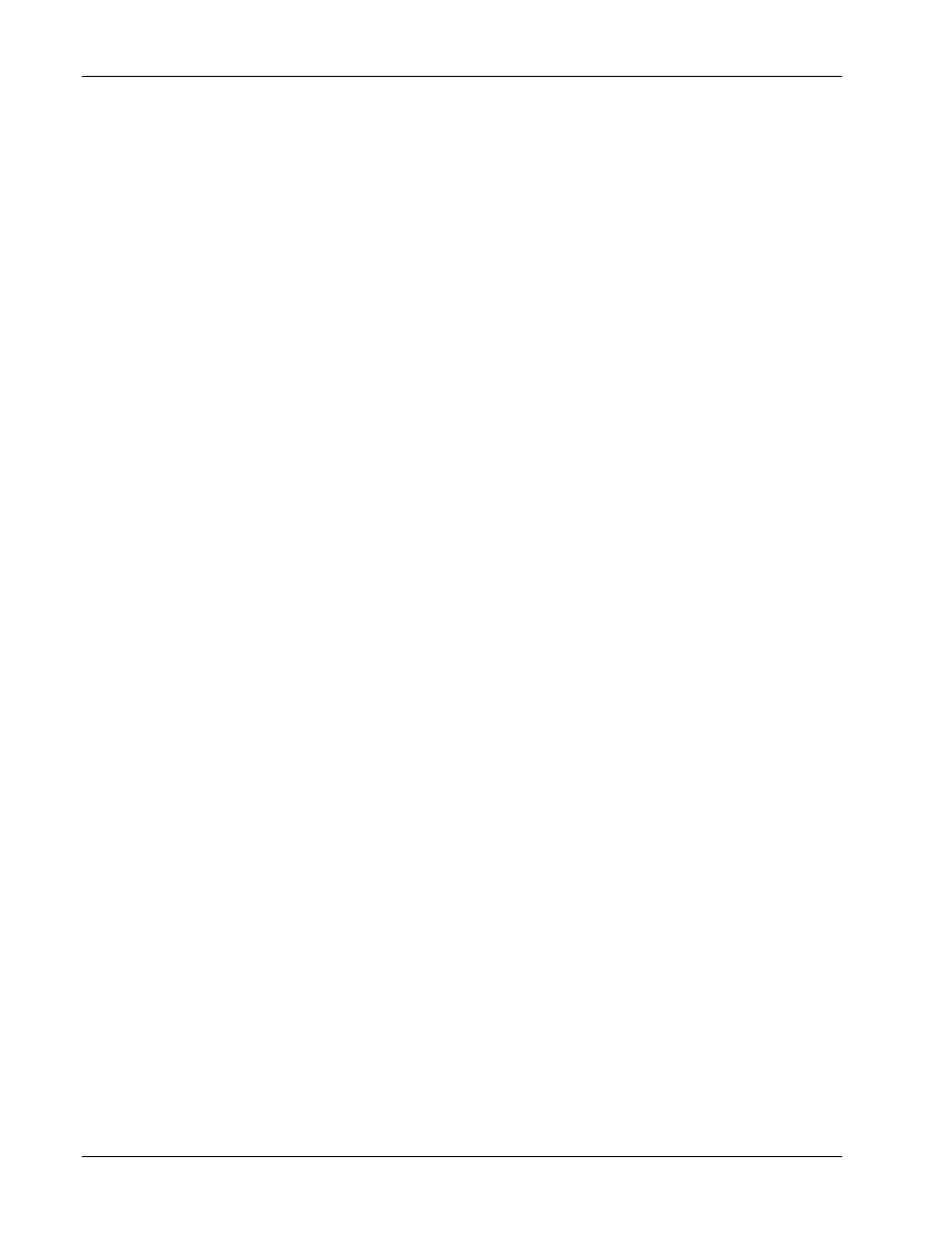Measurement Computing Personal488 rev.3.0 For DOS & Windows 3.Xi User Manual
Page 109

8J. Spreadsheets
II. SOFTWARE GUIDES - 8. Driver488/DRV
II-94
Personal488 User’s Manual, Rev. 3.0
BASIC provides a method for detecting and servicing external interrupts: the
ON PEN
statement. The
ON PEN
statement tells BASIC that, when an external interrupt is detected, a specific subroutine,
known as the interrupt service routine (ISR), is to be executed. Normally, the interrupt detected by
ON PEN
is the light pen interrupt. However, Driver488/DRV redefines this “light pen interrupt” to
signal when an IEEE 488 bus related interrupt (such as
SRQ
) has occurred.
Unlike BASIC, Lotus 1-2-3 does not provide an automatic method of checking for light pen status.
Therefore, a subroutine is needed to check for the interrupt. This subroutine uses the
SPOLL
command
to check for
SRQ
:
CheckSRQ:
{DEFINE Signal:VALUE}
{WRITELN SPOLL}
{READLN SP}
{LET SP,@VALUE(@MID(SP,0,@LENGTH(SP)-1))}
{IF SP=0}{BLANK ST195}{RETURN}
The
CheckSRQ
takes a numeric parameter,
Signal
, which can be used to note where in the program
the interrupt occurred. The subroutine begins by reading the response to the
SPOLL
command and
converting that response to a numeric value,
SP
. If
SP
is zero (
0
), then no
SRQ
is pending and we clear
the 195 status cell,
ST195
, and then return. If SP is non-zero, we know that an
SRQ
is pending.
The 195 can be set to request service on any of several different internal conditions. In particular, the
M2
command causes an
SRQ
upon the detection of any invalid command or command option by the
195:
{WRITELN “OUTPUT 16;M2X”}
This
OUTPUT
command is placed early in the program so that all subsequent commands to the 195
cause an
SRQ
, if they are invalid.
Now check for service requests by calling
CheckSRQ
at appropriate places in the program. The only
place
CheckSRQ
should not be used, is between a command that requests a response, such as
STATUS
or
ENTER
, and the statement(s) that read that response. The
CheckSRQ
parameter,
Signal
can be used
to identify where the interrupt was detected. A typical sequence might be:
{WRITELN “STATUS”}
{READLN Status}
{CheckSRQ 10}
{WRITELN ENTER 16}
{READLN Reading}
{CHECKSRQ 20}
Once
CheckSRQ
has determined, with a Serial Poll, that a service request is indeed pending, it then
checks the 195 to determine if it is the source of the interrupt. If there were other devices on the bus
that could be generating the
SRQ
, each of them would be have to be checked in turn.
{WRITELN SPOLL 16}
{READLN ST195}
{LET ST195,@VALUE(@MID(ST195,0,@LENGTH(ST195)-1))}~
The tilde (~) at the end of the
LET
statement forces evaluation of the spreadsheet. In particular, it
causes the values of the cells
DIO8
through
DIO1
to be set to the values of the bits of
ST195
. These
cells can then be examined to inspect the 195’s status:
{IF DIO7}{BRANCH 195SRQ}
{BEEP}{GETLABEL “Non-195 SRQ detected! Press Return.”,TypeHere}
{RESTART}{RETURN}
Bit
DIO7
, is returned as true (
1
) in the Serial Poll response of those devices requesting service. In our
simple example, we expect that the 195 is the only possible cause of an
SRQ
, and if it is not, there must
be some error. If
DIO7
is set, we
BRANCH
to
195SRQ
and continue with the subroutine. Otherwise we
BEEP
, display an error message, and terminate macro execution.
TypeHere
is a blank cell that holds
anything that is typed by the user before the return
is pressed.
